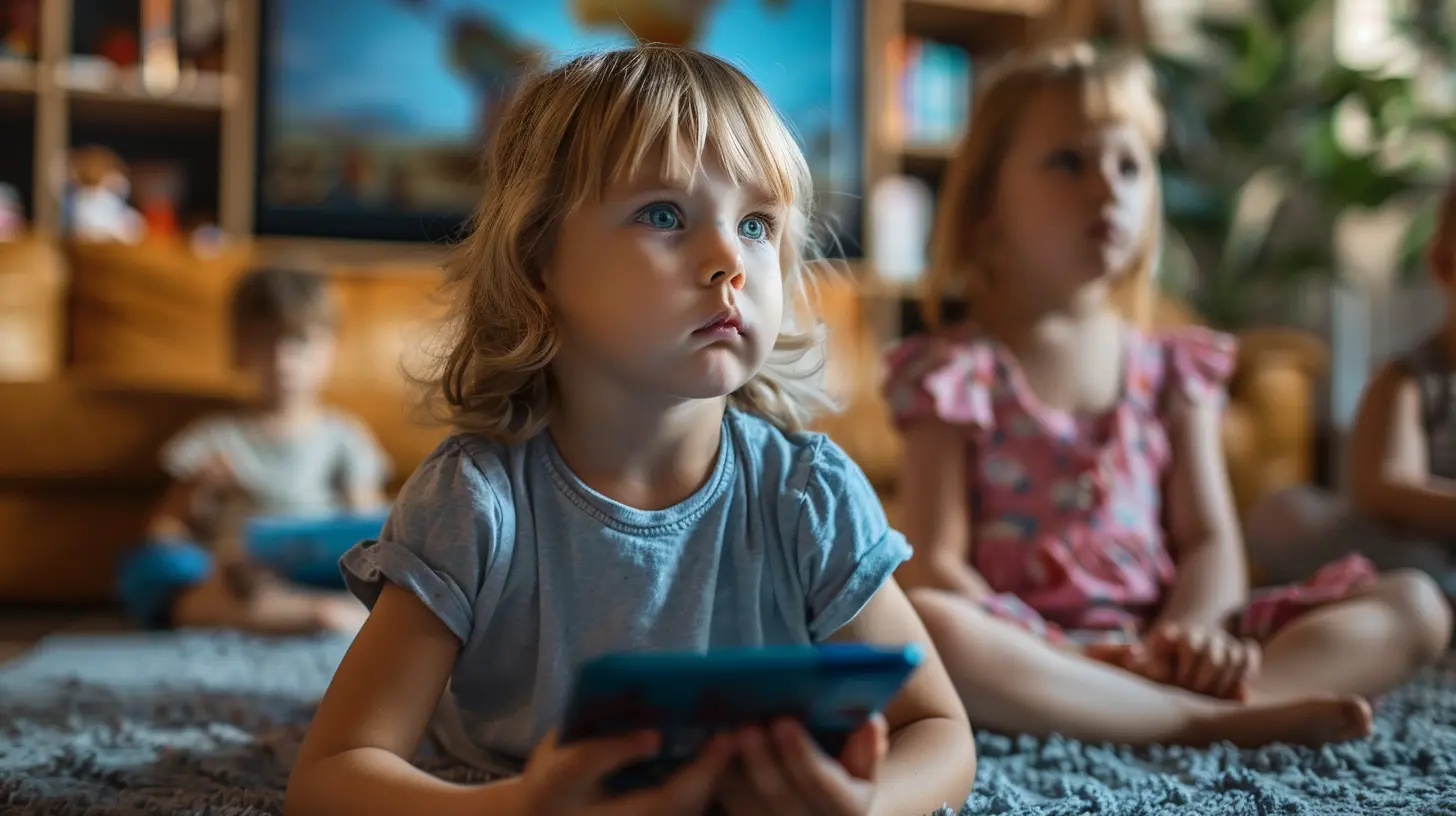Screen Time and Young Children: Setting Healthy Boundaries
20 July 2025
In today's digital age, screens are everywhere—TVs, tablets, smartphones, and computers. While technology has its benefits, excessive screen time can have negative effects on young children. As parents and caregivers, finding the right balance is key. So, how much is too much? And how can we set healthy boundaries without turning into the "bad guy"? Let’s dive in!

Why Screen Time Matters
Screen time isn’t just about entertainment. It plays a major role in how kids learn, interact, and develop. But here’s the catch—too much screen time can lead to problems like poor sleep, reduced physical activity, and even delayed social skills.Think about it: Would you let your child eat unlimited candy just because they love it? Probably not. The same principle applies to screens—moderation is essential.

The Effects of Excessive Screen Time
Let’s break it down. Too much screen time can impact children in different ways:1. Physical Health Issues
- Poor Sleep Patterns: Blue light from screens can mess with melatonin production, making it harder for kids to fall asleep.- Obesity Risk: More screen time often means less outdoor play, leading to a sedentary lifestyle.
- Eye Strain: Long hours staring at screens can cause eye fatigue, headaches, and even vision problems over time.
2. Mental and Emotional Effects
- Shorter Attention Span: Constant stimulation from screens can make it harder for kids to focus on slower-paced activities like reading.- Increased Anxiety and Mood Swings: Social media (even kid-friendly versions) can create unrealistic expectations and emotional stress.
- Reduced Coping Skills: Too much screen time can replace valuable playtime, which helps kids learn problem-solving and emotional regulation.
3. Social Development Concerns
- Less Face-to-Face Interaction: Screen-heavy kids might struggle with real-life social skills.- Delayed Language Development: Younger children need real conversations to build their vocabulary and communication skills.
- Weakened Family Bonds: If everyone's glued to a screen during dinner, meaningful family time takes a hit.

How Much Screen Time Is Too Much?
The American Academy of Pediatrics (AAP) recommends:- Under 18 months: Avoid screens entirely (except for video calls).
- 18-24 months: If introduced, screen time should be high-quality and always watched with a parent.
- 2-5 years: Limit to one hour per day of quality screen time.
- 6+ years: Maintain healthy limits and ensure screen time doesn’t interfere with sleep, school, or physical activity.
But hey, let’s be real—sometimes, you just need to hand over a tablet to get through the day. And that’s okay! The key is balance, not perfection.

Setting Healthy Screen Time Boundaries
So, what can parents do? Here are some realistic and practical ways to create healthy screen habits.1. Set Clear Rules and Stick to Them
- Establish daily screen time limits.- Create tech-free zones (like the dinner table and bedrooms).
- Use timers to signal when screen time is up.
2. Lead by Example
Kids copy what they see. If you're always glued to your phone, it’s hard to convince them to take breaks. Try setting a good example by reducing your own screen time.3. Encourage Other Activities
- Offer fun alternatives like puzzles, outdoor play, and arts and crafts.- Involve kids in activities that don’t require screens, like cooking or board games.
- Read books together—it’s a great way to improve attention span and language skills.
4. Use Screens for Learning, Not Just Entertainment
Not all screen time is created equal. Educational shows, interactive learning apps, and creative digital activities are great choices over mindless scrolling or passive watching.5. Watch Together When Possible
Co-watching content allows you to engage with your child, ask questions, and make screen time more interactive. It also helps you monitor what they’re watching to ensure it’s appropriate.6. Avoid Screens Before Bedtime
At least one hour before bedtime, shut down screens to help kids wind down and sleep better. A relaxing bedtime routine, like reading a book, can work wonders.7. Use Parental Controls and Settings
Many devices and apps let you:- Set daily screen time limits.
- Restrict inappropriate content.
- Monitor what your child is doing online.
Technology isn’t the enemy, but it should be used wisely.
What to Do When Kids Resist?
If your child throws a tantrum when screen time is up, you’re not alone. Here’s how to handle it without losing your mind:- Give Warnings: Let them know screen time is ending soon—this prevents sudden frustration.
- Offer Choices: Instead of just saying "no more screens," suggest an alternative activity.
- Stay Firm: Kids will test limits. Be consistent, even if they push back.
- Make It a Routine: When screen time has a predictable schedule, kids get used to the boundaries.
Over time, they’ll adapt—promise!
Striking the Right Balance
Screen time isn’t inherently bad. In fact, when used appropriately, technology can be a powerful tool for learning and creativity. The trick is to ensure it doesn’t replace essential experiences like physical play, family bonding, and real-world interactions.It all boils down to moderation, supervision, and smart choices. By setting clear boundaries, engaging in screen time alongside your child, and promoting other enriching activities, you can create a healthy relationship with technology.
Remember, at the end of the day, parenting isn’t about perfection—it’s about guidance, love, and balance.
all images in this post were generated using AI tools
Category:
Early Childhood EducationAuthor:

Madeleine Newton
Discussion
rate this article
1 comments
Josie Duffy
This article offers essential insights on managing screen time for young children. Clear boundaries are crucial for their development, ensuring a balanced approach that prioritizes both technology and real-world interactions.
August 3, 2025 at 12:18 PM

Madeleine Newton
Thank you for your insightful comment! I'm glad you found the article helpful in emphasizing the importance of boundaries for healthy development.


